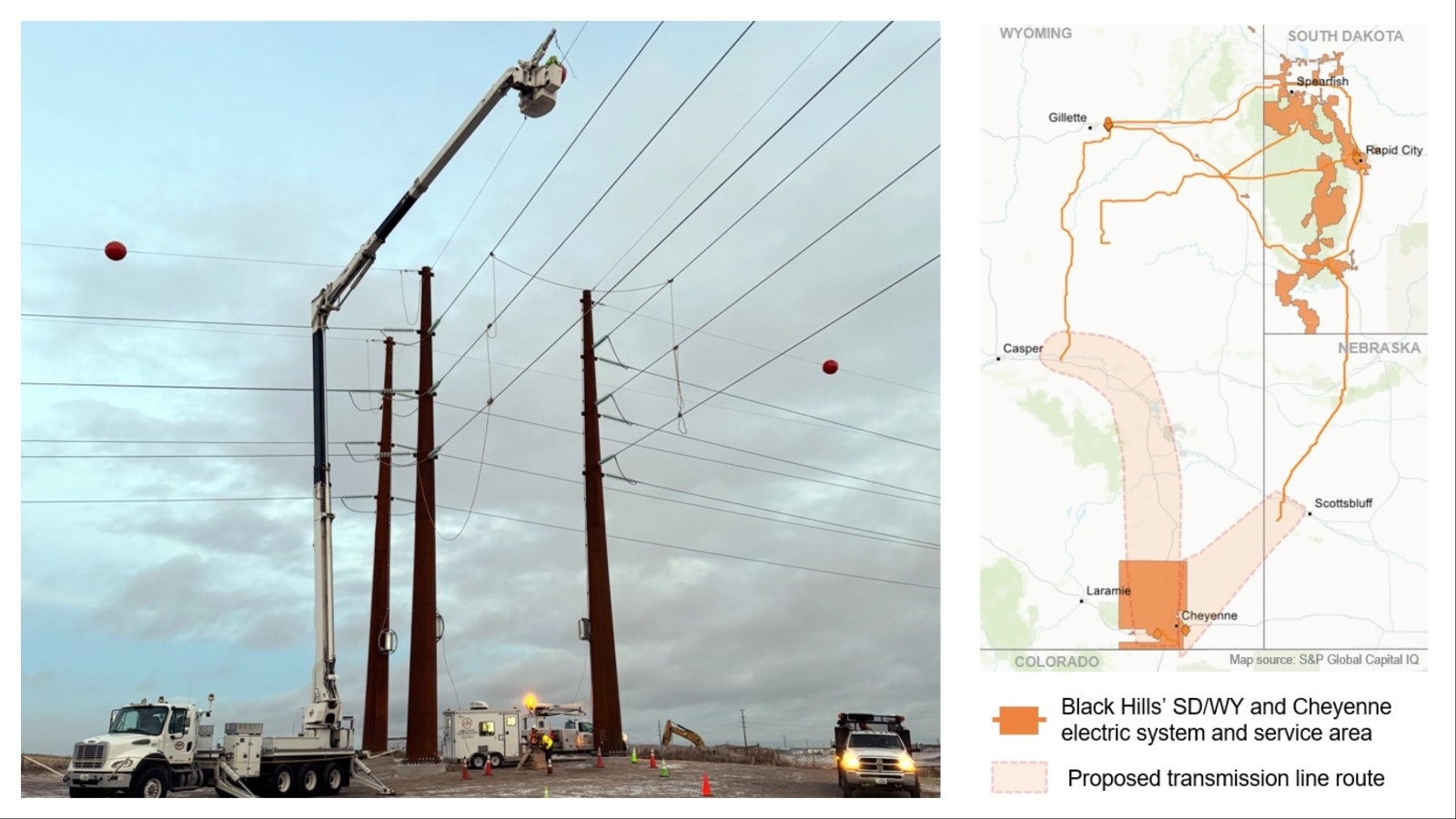Black Hills Energy is adding a new natural gas electric power plant to the grid serving a part of northeast Wyoming, and soon the company will complete its Ready Wyoming transmission line project. That will connect the grid that serves Newcastle, Upton and Osage with the utility's service area in southeast Wyoming.
The company said both developments help ensure reliable service and the ability to back up solar and wind-generated power with natural gas, and as a final backstop, diesel.
The new generator in Rapid City, South Dakota, will essentially have its own diesel backup generator in case the gas-fired turbine goes down.
Divided Grid
The Ready Wyoming transmission project represents the largest electrical infrastructure investment in Black Hills Energy's history, according to the utility.
The $260 million, 260-mile transmission expansion is approaching the finish line.
"We are on hopefully the final months of our Ready Wyoming project," said Wes Ashton, vice president of operations for South Dakota and Wyoming at Black Hills Energy.
"That's our transmission line project that is essentially a loop connecting our utilities in both northeast Wyoming and Rapid City down to Cheyenne,” Ashton told Cowboy State Daily.
The project addresses a fundamental challenge facing Wyoming's electrical grid. Currently, Black Hills operates two separate electric utilities in the state — Cheyenne Light, Fuel and Power and Black Hills Power serving northeastern communities.
The Ready Wyoming project will create an interconnected system for the first time.
"By having this grid, it not only will provide more resiliency for all customers, it will allow that low cost energy to be transmitted more freely by having room to be transmitted both directions," Ashton said.
The transmission expansion includes six new replacement or expanded substations and is expected to be fully operational by the end of the year.
The project spans five counties and about 300 landowners, contributing more than $100 million in economic benefits to Wyoming's economy, according to the utility.

Black Start
Alongside the transmission project, Black Hills Energy received approval from the Wyoming Public Service Commission in June for its $280 million Lange II Project, a 99-megawatt power plant in Rapid City that will serve customers in eastern Wyoming and South Dakota.
The new plant will replace what the utility refers to as the old coal-fired Ben French units.
"Out with the old, in with the new — that's a good way to describe it," Ashton said. "We have some units that are located in Rapid City. Those have been serving customers in northeastern Wyoming and in South Dakota since the 1960s."
The new plant will feature six reciprocating internal combustion engines — or RICE units — with dual-fuel capability that can run on either natural gas or diesel.
This technology provides what utility experts call "black start" capability; the ability to restart the electrical grid quickly in case of a major outage.
"A black start unit like these can go from off or running very low to full capacity in a matter of 90 seconds or a minute," Ashton explained. "That would be a tool we would use if anything ever happened of significance. These units would actually help us restart our entire system or help stabilize the grid."
The dual-fuel capability ensures reliability even during extreme weather events or supply disruptions, said Ashton.
"Things like wind energy, they integrate very well with a gas-fired unit," Ashton said. "We can have the resiliency of an electric system, and we can quickly ramp these units up or ramp them down based on those fluctuations in other energy sources and the demands for our customers."
Rate Impact
Ashton said the $280 million Lange II generator investment will initially be funded through shareholder capital, with any rate impacts subject to future regulatory review after the project becomes operational.
“When we go forward with this plan, the project is estimated at $280 million that's funded initially through our capital investments, through shareholder investments," Ashton said. "There is no immediate impact to customers and any changes would be in relation to a review that would come later after a project has been completed and is online.”
David Madison can be reached at david@cowboystatedaily.com.





